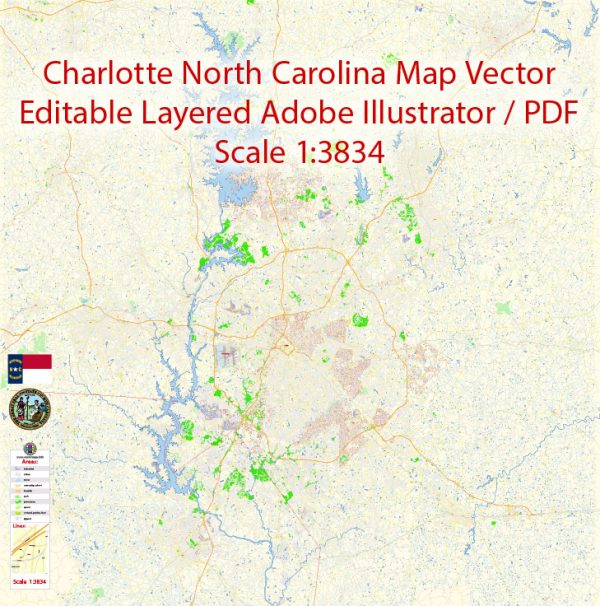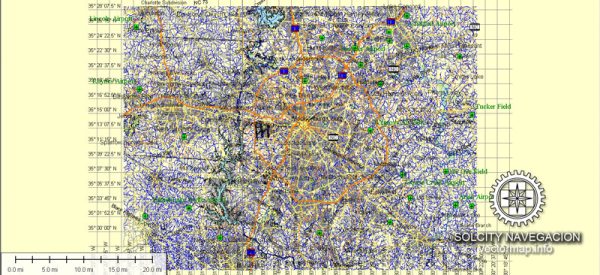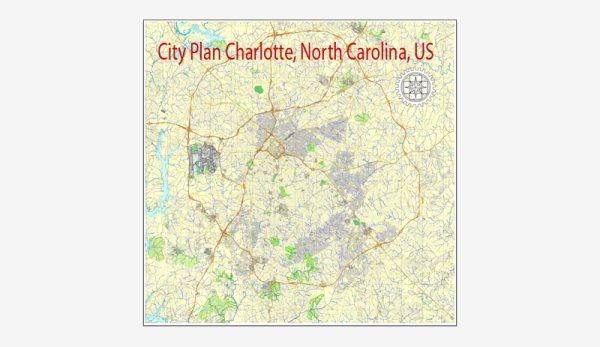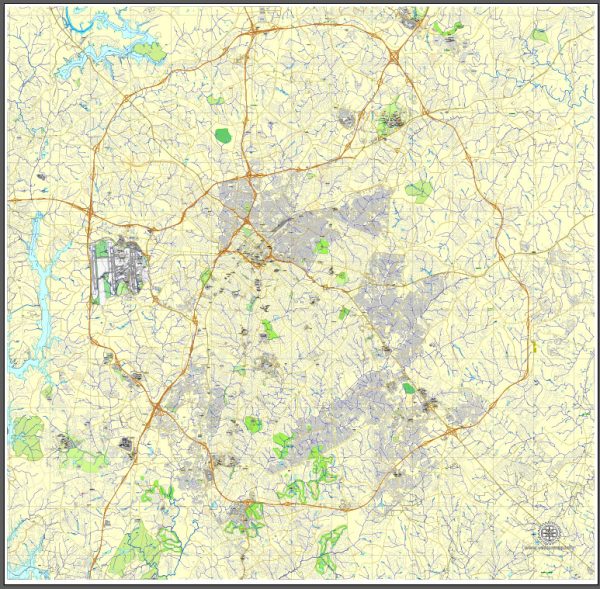Charlotte, North Carolina, has a rich history that is closely tied to the broader narrative of the United States. Here is a brief description of the city’s history:
- Early History: Before European settlement, the area now known as Charlotte was inhabited by Native American tribes, including the Catawba. European explorers and settlers began to arrive in the 18th century, and the region became part of the British North American colonies.
- American Revolution: Charlotte gained significance during the American Revolution when the city was the site of the Mecklenburg Declaration of Independence (allegedly dated May 20, 1775), making it one of the first places to declare independence from British rule. This event is celebrated in Charlotte every year with the “Meck Dec Day.”
- Gold Rush: In the early 19th century, the discovery of gold in the area led to a gold rush, with Charlotte becoming a major hub for gold mining and trade. This economic boom contributed to the city’s early growth.
- Railroad Hub: The expansion of the railroad network in the 19th century further enhanced Charlotte’s importance. It became a major transportation hub, which facilitated the movement of goods and people, and led to significant economic growth.
- Civil War: During the American Civil War, Charlotte played a role in the Confederate war effort as a manufacturing and transportation center. The city was spared major battles but was impacted by the broader consequences of the war.
- Post-Civil War Reconstruction: Following the Civil War, Charlotte, like many Southern cities, had to rebuild its economy. The city diversified its industries, moving away from an agrarian economy to embrace textiles, manufacturing, and banking.
- 20th Century Growth: In the 20th century, Charlotte continued to grow and develop. The city’s financial sector became increasingly prominent, with institutions like Bank of America and Wells Fargo establishing their headquarters in the city. It also expanded its cultural offerings, educational institutions, and sports teams.
- Civil Rights Movement: Charlotte played a role in the Civil Rights Movement of the 1960s. The city experienced significant civil rights demonstrations and actions, including the sit-ins at Woolworth’s lunch counter, which were pivotal moments in the struggle for racial equality.
- Modern Charlotte: Today, Charlotte is a major city in the southeastern United States. It is a hub for finance, business, and technology, and it continues to grow rapidly. The city is known for its vibrant arts and culture scene, sports teams like the Carolina Panthers (NFL) and Charlotte Hornets (NBA), and a diverse population.
Charlotte’s history reflects its transformation from a small colonial town to a bustling modern city, shaped by events like the American Revolution, the Gold Rush, and the rise of finance and industry in the 20th century. Its historical significance and contemporary growth make it a fascinating part of American history.





 Author: Kirill Shrayber, Ph.D.
Author: Kirill Shrayber, Ph.D.